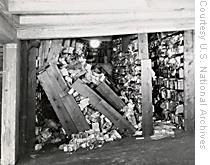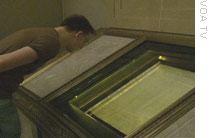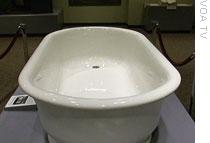National Archives Celebrates 75th Anniversary on Friday, June 19th.
Susan Logue (Voice of America) distributed this commentary on the 75th Anniversary of the National Archives.


Constitution Seventy-five years later, it is home to some of the most treasured documents in the United States. Every day, visitors fill the rotunda of the National Archives to get a glimpse of the documents that are the foundation of the United States government: the Declaration of Independence, the Constitution, and the Bill of Rights.
But there is much more to the National Archives than just the so-called Charters of Freedom. More than 9 billion records preserved.
Since 1934 it has been responsible for all official governmental historical records: judicial, legislative and executive. Of course, not every government document is saved. Only one to three percent are deemed valuable enough to permanently archive. But, as Kurtz explains, that still adds up to more than nine billion records. While the paper records are vast, there are records in other formats as well including video, film, and digital.
“You have wikis and blogs, digital e-mail, all capturing government business,” says Kurtz. He notes they present new challenges to the Archives. “Preserving them is not like having temperature- and humidity-control vaults for paper records, which will ensure the paper records last for hundreds of years. Digital media is much more fragile.”
On the other hand, Kurtz says, the digital age has presented some opportunities for the National Archives, which can provide access to holdings to people who will never be able to come to the National Archives in person.
The National Archives is celebrating its 75th anniversary with lectures and panel discussions, screenings of films, and an exhibit called “Big!,” featuring some of its more unusual holdings. “The original premise was to showcase some unique items that normally don’t get displayed because of their size,” says exhibits specialist Jennifer Johnson.


Johnson says that was presented to Richard Nixon by two boys who discovered the fossilized prints in New Jersey. “When they discovered these footprints they petitioned Nixon to preserve that area of land so they could study it, and he did. So they gave him a casting of the footprints.” Today, she notes, one of those boys is one of the leading paleontologists in the U.S. There are also more conventional records in the exhibit, illustrating big events and big ideas in American history, like the lunar landing and D-Day, the Normandy invasion that led to the Allied victory in World War Two.
Exhibits like “Big!” give visitors a glimpse of the vast holdings of the National Archives, but the stars of the collection remain the Charters of Freedom.
.